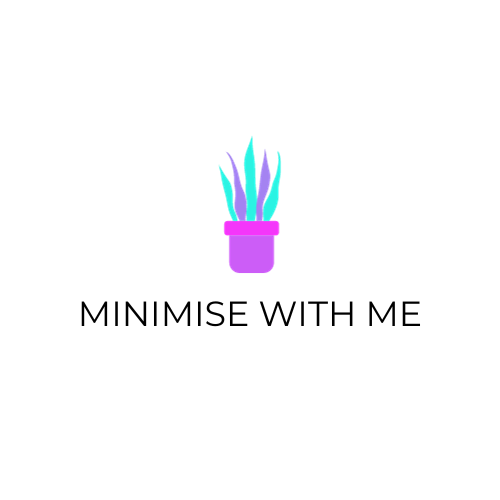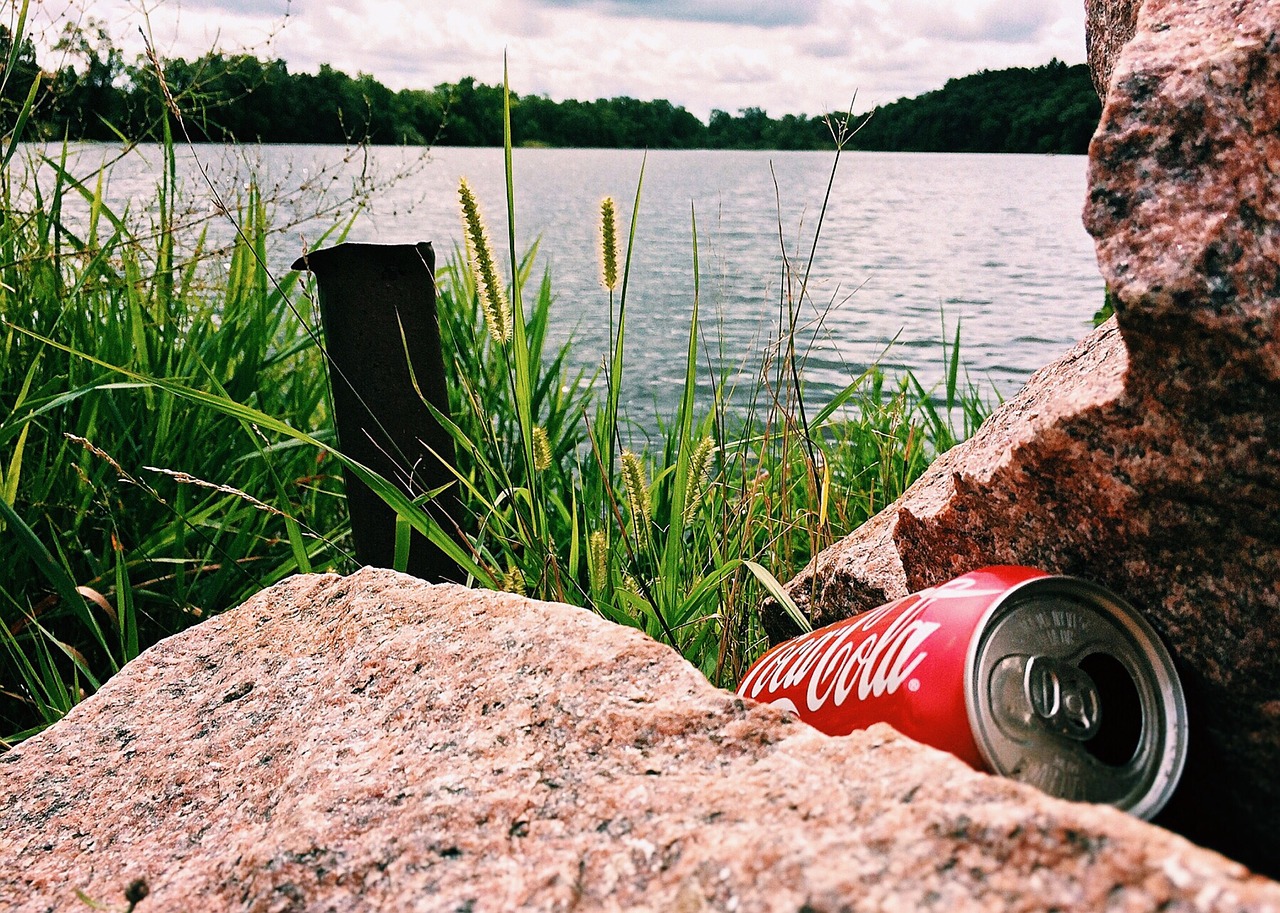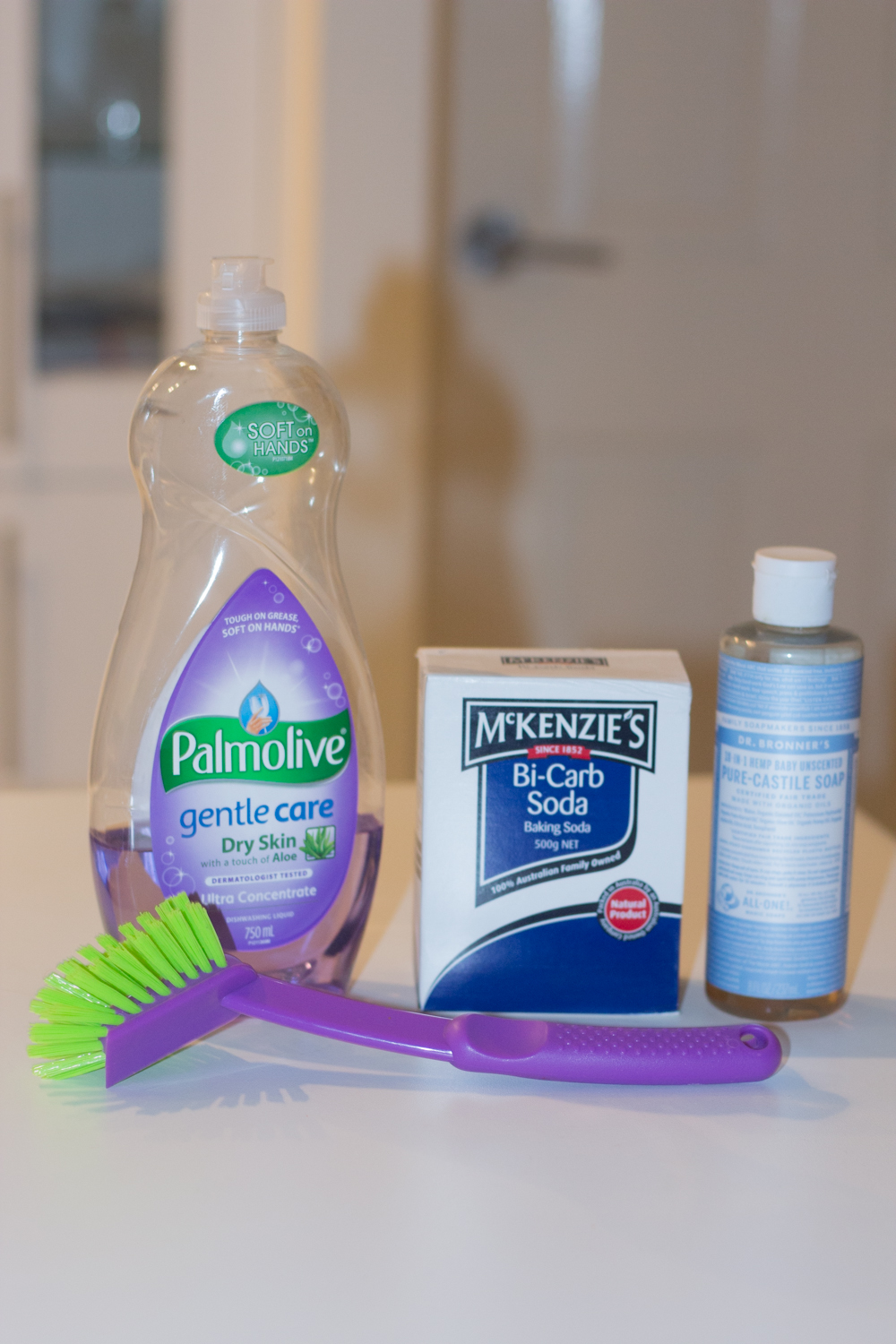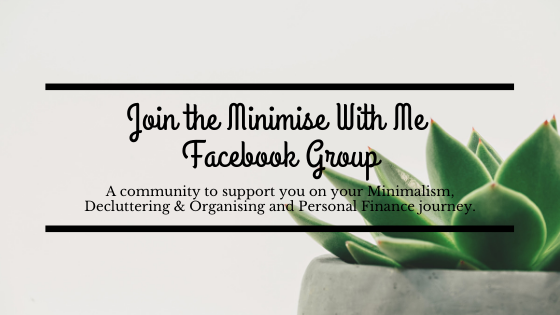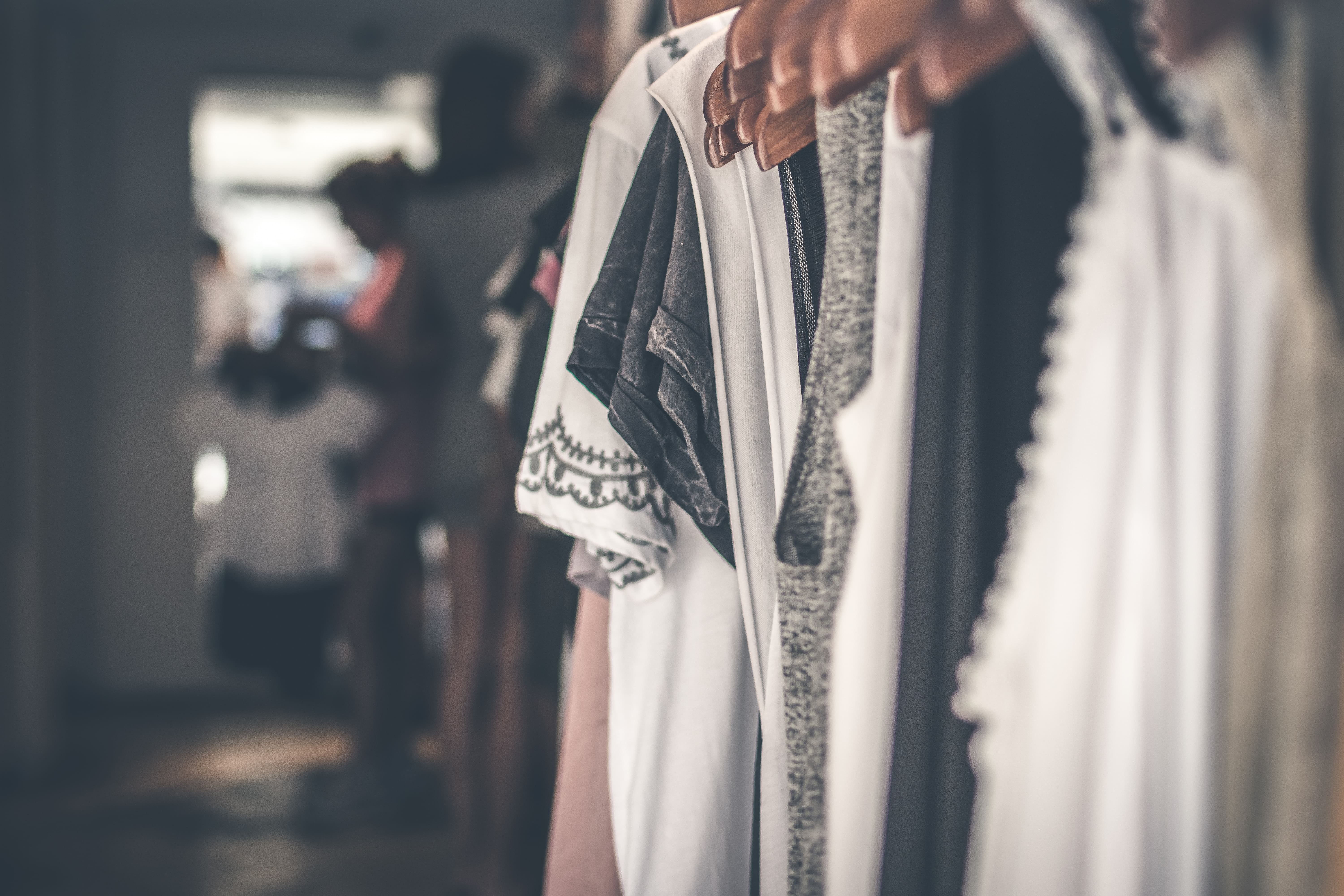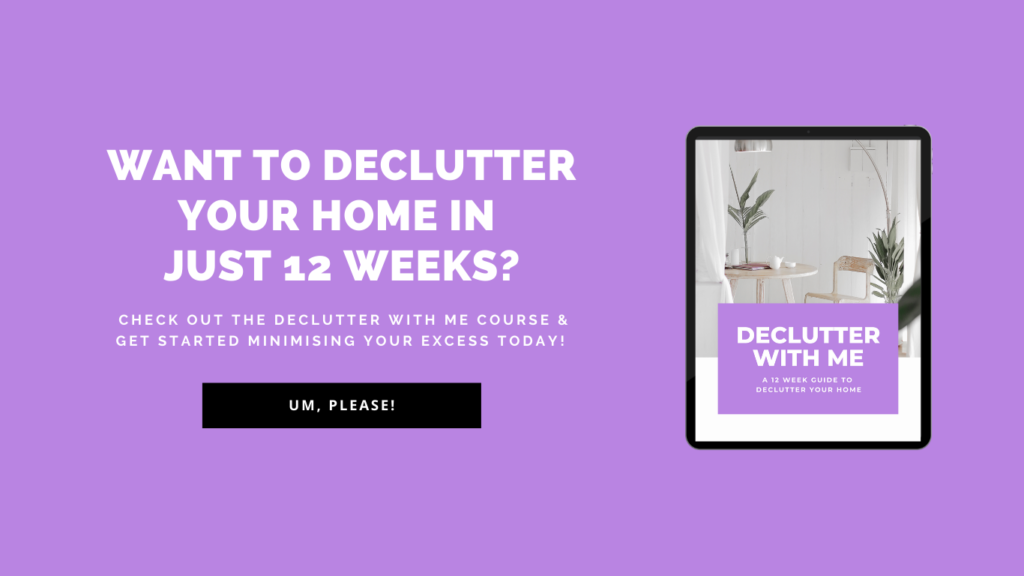This week I finally caught up with watching the ABC’s #WarOnWaste program hosted by Craig Reucassel and was completely shocked at the level of waste in Australia. And not just the unwanted stuff, but the perfectly good food that is going to waste.
I do try and be mindful of our waste and try to be conscious of waste in my home. Whether that be by only buying what is on our list, trying to use up as much of our fresh produce as we can and by recycling everything that we can. I wasn’t aware of the true situation of Australia’s waste and couldn’t be more grateful to this show for helping me realise that. If you are yet to see it please do. You will not regret it and living in ignorance is a big part of the problem. Let’s be educated! You can watch all three episodes of War on Waste on ABC’s iView.
I’m hoping to share some information I got from the show as well as tips you can try at home to reduce your waste and impact on the environment.
SOME QUICK WAR ON WASTE FACTS
- Every year the waste we generate in Australia is growing twice the rate of our population.
- As a nation we use over 2 million shopping bags a day.
- In Australian households 20% of food is binned.
- The average family throws out $3500 worth of food each year.
- 40% of bananas along with other fruits and vegies are binned due to strict cosmetic standards. Often these are just because a banana is too long or short or curved, or a potato has an irregular shape – the freshness of the item is not taken into account.
- Australian’s throw out a tram-full of coffee cups every half hour.
- the greenhouse gases produced by food waste in Australian landfill each year is equivalent to the emissions of Australia’s steel and iron ore industries combined
TIPS ON REDUCING YOUR HOUSEHOLD WASTE
- Meal plan and shop from a list to avoid buying excess food. You can always buy more but you often can’t take the excess back. Only buy what you need. If you only plan to use two tomatoes don’t buy a pack just because they are cheaper. When you bin four of them they won’t be. See here for more tips on how you can save on groceries and reduce the food waste in your home.
- Buy a reusable coffee cup. I got one from Keep Cup and have seen many others in Kmart, Typo and other stores.
- Bring your reusable bags. Shopping bags are the worst thing that an end up in landfill and are very hard to recycle. Bring your own reusable bags instead and help reduce the number of bags ending up in landfill.
- Bring in any spare bags to your supermarkets bag recycling bin.
- Extend the life of your herbs by putting them in a glass of water as soon as you bring them home.
- Test eggs by dropping them into a glass of water. If they sink they are okay to eat.
- Avoid taking bags for fresh produce. Put them in your trolley, basket or reusable bag.
- Check your fridge regularly to see what leftovers you need to eat or groceries to use up.
- Rotate your new food to the back, and older food move to the front so you can use up the food items that will expire sooner.
- Put your food in a container as soon as you open it can help minimise waste and keep it fresher for longer.
RECYCLING TIPS
- Remove the lids from your plastic bottles and make sure they are empty before you place them in your recycling bin. In the sorting areas of recycling plant paper and plastics are separated. If bottles still contain liquid it will stop them being blown up into the plastics sorting area in the chain line so be sure to empty them out before you put them in your recycling bin.
- Any recycling items left in plastic bags are not recycled. This slows down the sorting process so those bagged items do not go on to be recycled. Keep all your recyclables bag free.
- If you have broken glass or ceramics like ovenproof dishes, drinking glasses or mugs, creatively reuse or place in your rubbish bin, because just 15g of ovenproof glass can contaminate one tonne of normal glass, making it useless for recycling.
- Consider composting your food scraps to reduce the wood waste in land fill and the emissions that creates.
- When recycling containers give them a quick rinse, they do not have to be spotless. Remove stuck on food from paper and cardboard before recycling.
- Recycle your Printer Cartridges via the ‘Cartridges 4 Planet Ark‘ recycling boxes in participating Australia Post, Officeworks, Harvey Norman, and Dick Smith Electronics stores.
- Mobile Phones can be recycled through MobileMuster.
- Batteries, CDs and light globes can be taken to your nearest library. Check with them in advance to make sure they accept these things.
REUSING ITEMS AROUND YOUR HOME
- Another way to reduce what your household sends to landfill is to find creative ways to reuse what you do have. This is a great way to get crafty, save some money and help the environment. Try these handy tips:
- Reuse old candle and condiment jars. They can holds spare buttons, screws in your garage, 100s and 1000s, tea bags etc.
- Wash out takeaway containers and re-use as much as possible before they break. Smaller ones for gravy can be used to bring small snacks in such as lollies or nuts.
- Wash old shampoo and conditioner and other bottles to use when travelling. I also use these to store our current soap in a smaller container that doesn’t take up as much space as the bulk 1kg containers.
- Use an old baby formula tin to make a home-made wet wipe dispenser
- Cut up old towels into cleaning rags instead of using sponges or paper towel.
- Re-purpose gift containers or things that come with boxes such as perfume or a watch to organise junk drawer items.
- Give an old pot plant some new paint to give it a new lease of life.
- Up-cycle old cereal boxes or cardboard boxes into storage boxes for your drawers. Cut the bottoms off and wrap with your favourite coloured wrapping paper.
- Repair old clothes if possible rather than binning them. Sew on a new button, or take it to the alterer for repair if it is something out of your skill level.
- Use toilet rolls to wrap and identify your spare cables. They can also be used for arts and crafts projects with the kids.
- Use old sauce jars for decorative pieces. We put musical craft paper in ours with a candle and some yarn as a wedding ornament.
- If you have excess frames get a picture or make an artwork for a gift for a family or friend.
- Use an old t-shirt to make a bag. I cut up old t-shirts of my husbands that were perfectly good, but that he didn’t wear and made two laundry bags for travelling.
- Decorate old tin cans and use for planting herbs or storing stationery.
- Use old CDs to create a shiny mosaic artwork or mirror.
- Donate an old bed sheets and some pegs and a torch for your kids own fort kit.
- Drilling into an old dinosaur toy can make a cool toothbrush holder for your kids.
>>If you want more information on how you can reduce your excess consumption check out
10 Benefits of a Minimalist Inspired Life
LET’S GET CREATIVE
Other creative ways to help reduce your household waste:
TOY LIBRARIES
Old toys are donated here and can be borrowed, just like library books for kids to use and return in a few weeks. This is a great way to reduce unwanted toys ending up in landfill, having excess permanent clutter in your home and to save money. Kids can outgrow toys fast so this sounds like an amazing solution. Click here for more information from War on Waste and here to locate your closest toy library.
CLOTHES SWAPS
Thanks to fast fashion clothing is ending up in landfill in larger numbers than ever before. With the current price of clothing and often lack of quality materials, it’s no wonder we are binning more clothes than ever. In order to combat this clothes swap meets are a great option. You can bring some unwanted clothes to swap for someone else’s unwanted items and go home with something new that you love all the while avoiding adding to landfill. For more info on Clothes swaps click here. The Clothes Exchange holds occasional clothes swap meets that are free of charge when you register. Or you can hold your own clothes swap parties with friends or family. Ask everyone to bring in a few pieces they would like to swap and a plate of food and get swapping!
REUSING YOUR OLD MOBILE PHONES
If you have a spare (or multiple) old phones lying around consider these options to reuse them:
1. Make a kid friendly phone for your kids (no more dropping your phone ;))
2. Use your phone as a dedicated MP3 player and save all your memory on your current phone.
3. Use your phone as a digital radio.
4. Turn your old phone into a hand-held gamin device
5. Use it as a security monitor for your home.
6. Use your old phone without a sim for storing encrypted data.
Click here for more information on how you can reuse your old phones from War on Waste. Alternatively take your phone to be recycled at your nearest Mobile Muster recycling box.
Share the Dignity
Share the dignity is an Aussie charity that aims to provide assistance to homeless women. Each year they do a collection called “It’s In The Bag” in the weeks leading up to Christmas where they ask you to donate a handbag in good condition to someone less fortunate and fill it up with useful things such as sanitary items, toothbrushes and toothpaste, a book you no longer need, pajamas, tissues, lotions -anything to make a women facing hard times feel special. I did this last year and look forward to doing it again this November. If you have any jewellery you no longer want, or can spare some extra cash with your weekly shop add a few things to your trolley that you can put into your handbag for the next collection. This is a great way to dispose of some unwanted items thoughtfully and make someone in needs day 🙂
WHAT ELSE YOU CAN DO
If you want to do more, War On Waste have provided some more information and the contact details for each State that is yet to Ban The Bag. If we all Ban(d) together and take action by emailing our State’s Premier we might have a chance of making a much needed change!
Do you have any tips to reduce food and other waste in your home? Have you found creative ways to up-cycle items around your home to help limit things ending up in landfill? Share your tips below 🙂
We are constantly bombarded with ads telling us what new cleaning products are available and why we need them to keep our homes safe and germ free. With massive advertising budgets and fancy packaging the chemical based cleaning products often get their products into homes without consumers knowing the downsides of using these products.
There are many significant benefits of home-made cleaning products that people who don’t actively seek out the information might not be aware of. They can help with making your home so much safer with very little effort. Here are 10 benefits of home-made cleaning products and why I have converted to using these in my home and how they might be useful to you. Click here for nine of My favourite Home-Made Cleaning Recipes.
1. Great for skin allergy sufferers.
As a sufferer of dermatitis, I was forever dreading cleaning my home, knowing that soon enough I would have to deal with the reoccurring skin allergies. Even when wearing gloves whilst cleaning, I’d somehow manage to get the cleaning products on my skin and be paying the price for days. Most store bought cleaners are extremely harsh and should not come into contact with your skin, but this is easier said than done. After researching home made home-made cleaning products I was able to clean safely, without exposing my skin to harsh chemicals and limiting the effects on my health. To be extra cautious I use a sensitive skin dish washing liquid as other ones can severely affect your skin and dry it out. This benefit is the biggest reason I have made the switch to DIY Natural cleaners.
2. Save money.
Making your own cleaning products is a great way to save money on your cleaning bills. A handful of ingredients; bi-carb, vinegar, dish washing liquid and rubbing alcohol can be used to make a whole range of cleaning products for the whole home, with a little bit goes a long way. Even better they are things you probably already have at home on hand and are always affordable. No more having to wait for them to go on sale! Over the past couple of years since making the change to mostly home-made cleaners I couldn’t count the amount of savings we’ve had but can promise you it will go a long way to reducing your cleaning expense budget.
3. Safe to have around kids and pets.
Using natural products like vinegar and bi-carb soda are items that can be found in your pantry and are not going to harm your kids or animals if they are accidentally consumed. It may not be a pleasant experience but won’t be harmful as using a more toxic product like bleach. This will open up the possibility to having your kids help out around the home with age appropriate tasks knowing they are using safe products (not sure how helpful the animals will be ;)).
4. Minimise the number of products you have cluttering up your cupboards.
When you walk into the cleaning aisle it can be overwhelming trying to decide on what to buy from the endless cleaning product options. There seems to be a different product for each cleaning task. Home-made cleaners require a much smaller number of products and can be used to clean multiple things. Most of the ingredients can be mixed and matched to make cleaners for all of your home needs. Soon you won’t have to spend ages looking for a cleaner in your cleaning cabinet that is getting out of hand.
5. Health benefits of reducing chemicals in your home.
Most cleaning products have warning labels on them such as use in well ventilated areas. The use of some more toxic products can lead to severe health issues such as Asthma. Reducing your exposure to these types of chemicals in your home is going to pay off for your health in the long run. The less we are exposed to these products the better.
6. Better cleaning success.
I have found in my experience that home made natural cleaning products work better than most other brand made products. I’ve been using them for about two years now and have not missed the store bought versions. When you can clean a grimy stove top with a couple of drops of dish washing liquid and water with ease, why would you pay for the pricey, toxic version?!
7. They won’t discolour your clothing or manchester.
No matter how hard I try and clean without getting chemical products on my clothes, manchester or carpet there is always that one drop that manages to undo everything. This will be a thing of the past with home-made cleaning products. I’ve used store bought Mould Remover in the past and had to worry about it dripping off the roof and getting on my new quilt cover. After substituting this product for a home made version of water and tea-tree oil in a spray bottle, I realised it was just as effective and took away the concerns of having it ruin anything. Seeing as vinegar, bicarb and dishwashing liquid are used for washing your dishes or sink it’s not going to hurt to spill it anywhere. 😉
8. Avoid chemical air pollution.
If you are someone who is sensitive to harsh smells, store bought cleaners could be a little too strong for your scent tolerance. Products like bleach linger in the air for hours and can make you feel ill and light-headed. This can’t be healthy to breathe in long term and certainly isn’t pleasant. Making your own cleaning products means you can add your own essential oils and create a scent that you love, removing those lingering unpleasant, chemical ones from your home.
9. Better for the environment.
Non-toxic home-made cleaning products are much better for the environment. No more pouring toxic chemicals down your sink into the waterways or having your home environment exposed to harsh chemicals. Using home made cleaners can also help eliminate environmental waste. Your products will go a lot further meaning less replacing them and less waste. You will also require less trips to the stores which is another plus for the environment. Products such as anti-bacterial wipes can be replaced with a DIY all-purpose cleaner and microfibre cloth. These are just as effective at cleaning and washable, eliminating the waste disposable wipes create.
10. Peace of mind.
Making your own cleaning products means you know exactly what is in them. No more trying to read and research all those chemical ingredients you’ve possibly never heard of and wondering about what effects it can have on your families health. Most of all, you have control over what you do and don’t use and what chemicals you are bringing or not bringing into your home.
Comment Question: Do you prefer natural cleaning recipes or swear by the store bought versions? Please comment below with your favourite cleaning products and whether you prefer home-made cleaners or store-bought ones.
If you found value in this post I would be super appreciative if you could share it with others who might also find value in it 🙂
![]()
Have you ever considered the switch to home-made cleaning recipes?
About a year ago I watched a documentary on Netflix called The Human Experiment which opened my eyes up to the dangers of having so many chemicals in our homes. I’d been dealing with the frustration of sensitive skin for years meaning I had to be careful of what my skin came in contact with, even dish soap and hand wash would make me break out in an extremely uncomfortable Dermatitis rash. I soon became very passionate about finding ways to keep my home clean, whilst looking after my health and skin and was on a mission to learn about natural home cleaners and testing them out.
After much research and trial and error I came a cross a few staple home-made cleaning recipes that I now use every day.
Here is a list of My Favourite Home-Made Cleaning Recipes. They work just as good in my experience as brand name chemical cleaners and are not only more affordable, but safer to use in your home. Please see my blog on 10 Benefits of Home-Made Cleaning Products for ten reasons why I recommend making the switch to home-made cleaning products and now love them.
My Favourite Home-Made Cleaning Recipes
INGREDIENTS LISTS
These are the basic must have items for your home-made cleaner recipes:
- White vinegar
- Dishwashing Liquid (I use Palmolive Dishwashing Liquid Ultra Dry Skin Aloe for sensitive skin)
- Bi-Carbonate Soda
- Essential Oils (Tea-tree and Lavender oil preferably)
- Rubbing Alcohol
- Water
- Spray bottles
- Labels (use a label maker or stick on labels)
Don’t forget to label all your spray bottles as when you come back in a week you will probably have no idea what is in what bottle. It’s really worth it to save you figuring out what is in what bottle and having to waste your cleaning products.
These are 9 of my favourite home-made cleaning recipes!
Home-made All Purpose Spray (Two versions)
I have two recipes that both work wonderfully. Sometimes if I am in a rush I will make the simpler version and if I have more time I will go with the second version.
All Purpose Spray (Simple Version)
Fill a spray bottle with warm water and add one teaspoon of dishwashing liquid. That’s it! This should be gentle enough to use on most surfaces and is a cleaner I use for all around the home. I would use the Version 2 cleaner for more stubborn stains unless you have stone bench tops. Please check the care guide for your bench tops before using any cleaning products as vinegar can damage stone and other surfaces.
All Purpose Spray (Version 2)
In a spray bottle preferably over a sink (the bottle can overflow with the bi-carb soda and vinegar reacting) put the following
- 4 Tbsp of white vinegar
- 1/2 Tsp of dish washing liquid
- 2 Tsp of bi-carb soda
- Fill the rest of the spray bottle with warm water.
Spray the solution on your stained surfaces and let sit for about 20 seconds to help break up any hard to move stains. If you are using the bottle when the cleaner is back to room temperature, throw the bottle in the microwave for about 10 seconds and this will help remove harder to move stains. This solution is what I use for everyday All-Purpose Cleaner, just refill when you are out.
As mentioned above please check whether vinegar can be used on your bench tops as some stone benches can be damaged by vinegar.
Related: If you’re currently stuck cleaning your home alone and are keen to get other members of your household more involved in helping out check out How to Get your Family On Board With Cleaning for tips on how you can involve your partner, kids or anyone else living with you with cleaning.
Linen Spray
This is a spray to help keep your sheet smelling amazing between washes.
Fill a small plastic spray bottle (I use the ones in those travel container packs) with:
- I cup of distilled water
- 5-10 drops of essential oils
- 2 Tbsp of rubbing alcohol
Use this to spray before sleep to spray your bed linens. Lavender essential oils can provide a calming scent but feel free to choose whatever scent you prefer.
Glass Cleaner
Fill a spray bottle with
- ½ Water
- ½ White Vinegar
- Spray Bottle
Since starting to use this glass cleaner I have never looked back or thought to buy a regular store bought version. Just make up as described above in a matter of seconds and spray contents of glass cleaner on mirrors or windows and wipe over with a microfiber cloth. You’ll have beautiful, streak-free mirrors and windows in no time. Leave a bottle of this in your bathroom and a microfiber cloth to clean as you go.
Shower/Tile Cleaner
Fill a spray bottle with
- ⅓ vinegar
- ⅓ dishwashing liquid
- ⅓ water
This is great for cleaning showers and tiles with a brush or sponge. Another option is to fill a refillable dish washing brush with a mixture of ½ vinegar and ½ dish washing soap to scrub all over the shower with. The vinegar smell will dissipate soon after and dish washing liquid will give you a nice scent over the harsh scents most chemical cleaners provide.
Daily Shower Spray (same ingredients as glass cleaner)
- Spray bottle
- ½ water
- ½ vinegar
I leave a bottle of this in our shower to spray down the shower after each use (well, as often as I can remember to ;)). Spray down the tiles and shower glass and floor if it is the last shower of the morning or night (or last for a while). The vinegar helps to break down soap scum and fights the growth of mould so will make your weekly shower scrub a breeze! Remind your partner or room mates or whoever uses the shower to give it a quick spray over when they step out, it only takes 20 seconds and will save whoever is stuck cleaning it a lot of elbow grease!
As mould loves moisture, another tip from Clean My Space’s Melissa Maker to avoid your bathroom being taken over by it is to squeegee or wipe down the shower screens or tiles with a cloth after each shower. This is a bit more time consuming than the after shower spray but is a massive help if you can manage it.
Toilet Bowl Cleaner
- Spray bottle
- Fill with vinegar
- Add 10-15 drops of essential oils
- Shake before each use
Combine vinegar and essential oils in a spray bottle. Spray vinegar mixture inside bowl and around toilet. Allow to sit for a few minutes. Sprinkle baking soda inside toilet bowl and scrub inside of bowl with a toilet brush. The Bi-carb soda gives a bit of abrasion to remove any hard to remove stains.
You can use the all over purpose cleaner (Version 1) or the above recipe spray to clean the outside and seat of the toilet.
Disinfectant Spray (Non-scented)
- Spray bottle (you can use one of the small travel spray bottles mentioned above)
- ½ water
- ½ rubbing alcohol
A great spray for disinfecting surface around the home such as bench tops, door handles or cupboard handles and for cleaning your toilet brush.
Disinfectant Spray (Scented)
- 3 cups of water
- ½ cup white vinegar
- Tea-tree or Lavender essential oils (10-15 drops or a blend of each)
- Spray bottle
For those who love a nice smelling home this second disinfectant spray not only leaves your home free of germs, but with a lovely calming scent. Tea-tree and lavender essential oils can be used for their antibacterial properties or blended with other favourite scents you have.
Do you have a favourite home-made cleaning recipe? Please comment below with anything that you love to use in your home.
It can be hard to know where to start when decluttering. There are so many rooms and areas you could begin with and it can seem overwhelming when starting out. When we are so focused on bringing new things into our home we can forget the importance of removing the items that are no longer useful to us and could be taking up valuable space in our home.
Do you open your kitchen utensil drawer only to become flustered trying to find the one thing you actually need?
Have you accumulated twenty mugs in the cups cupboard and seem to forever have endless ones to wash?
Is your linen closet overflowing so closing it is a struggle to open and close?
Downsizing our excess stuff can allow us to reduce stress in our lives and make some of our chores less bothersome. We are limited to the space we have in our homes so if your cupboards and shelves are overflowing with stuff it might be time to start clearing some of it out.
Here is a list of 101 Things To Declutter In Your Home Right Now that will give you a place to start your decluttering journey by area and hopefully the start to a less cluttered, more simplified life.
To make life easier I have included a Printable Decluttering Checklist for you. Simply click this link or the one at the bottom of this page & sign up to grab your free printable in seconds!
101 Things To Declutter In Your Home Right Now
Kitchen
1. Duplicate utensils.
2. Excess kitchen knives.
3. Excess cleaning supplies.
4. Cutlery.
5. Plates.
6. Cups and mugs.
7. Bakeware.
8. Single purpose appliances such as doughnut makers, popcorn makers etc.
9. Restaurant menus.
10. Excess vases.
11. Pots and Pans.
12. Tupperware with missing lids.
13. Expired medicine.
14. Unwanted cookbooks.
Fridge/Freezer
15. Expired condiments in your fridge.
16. Uneaten leftovers.
17. Unwanted drinks.
18. Frozen meats with freezer burn.
19. Food that you don’t plan on eating due to a change of diet etc.
Declutter With Me Decluttering Course
Are you finding yourself overwhelmed and stressed out by clutter in your home? If you’re looking to minimise the excess in your life, Declutter With Me: A 12 Week Guide to Declutter Your Home is a go-at-your-own-pace course that will give you the step-by-step, room-by-room instructions to help you clear the clutter in your home in as soon as just 12 weeks!
But clearing the clutter isn’t just about getting rid of your excess stuff. It’s important to change your behaviour and consumer habits so you can avoid re-cluttering your space once you have decluttered. Included in Declutter With Me, are “Keep It Minimal” tips for each area in your home + 7 Tips To Help You Keep Your Home Minimal, to give you strategies you can implement to help you spend with intention so you can avoid bringing clutter back into your home.
If you are keen to minimise your unwanted clutter check out Declutter With Me so you can create a home you love!
Pantry
20. Expired food in your pantry.
21. Unwanted alcohol.
22. Expired spices or any you don’t use.
23. Any food you don’t plan on eating.
Bathroom
24. Shampoos and conditioners. Avoid buying separate ones for each person unless necessary. Try and stick to the same brand so you don’t end up with multiple bottles going unused cluttering up your cupboard.
25. Old or unused Makeup. What makeup do you currently use, is there something you haven’t touched in the past year? Do you have ten different eye shadow pallets when a few would be enough? Makeup has a limited shelf life and should be used up in 1-2 years for most products. See this link for details on expiration dates of makeup.
26. Beauty products. Limit beauty products to what you need and avoid buying more until you’ve used up what you have.
27. Lotions and leave-in conditioners. If you don’t plan to use it give it to someone who will or toss it.
28. Decor. Remove excess decor from the bathroom and countertops. The less you have, the less you have to move when cleaning. Have a few nice decorative pieces and clear the rest.
29. Hair accessories.
30. Old razors.
Manchester
31. Towels, face washers and hand towels.
32. Quilt covers. How many quilt covers do you have? Assess what ones you still love and donate the rest. Ideally, you need one to use and one spare for when the other one is in the wash.
33. Blankets.
34. Pillows.
35. Bath mats.
36. Spare curtains that are no longer in fashion or have been sitting in the linen closet for years.
Master Bedroom
37. Perfumes or fragrances you don’t like.
38. Bedroom decor you no longer love.
39. The stuff under your bed.
40. The bedroom TV. Do you really need that eyesore in your bedroom sanctuary?
41. Books on your nightstand that you aren’t currently reading.
42. Anything that doesn’t belong in your bedroom (for us more often than not it’s guitars :p).
Wardrobe
43. Shoes that you don’t enjoy wearing.
44. Worn belts.
45. Ties that you no longer like.
46. Handbags that are no longer your style or worn.
47. Jewellery/Accessories that you no longer like or wear.
48. Clothing that you haven’t worn in the past 6-12 months. Use the backwards hanger method to establish what you do and don’t wear.
49. Socks that are missing a pair or have holes in them.
50. Underwear that is uncomfortable or has seen better days.
51. Old pyjamas that have had their time.
Laundry
52. Reduce your wardrobe.
53. Excess laundry baskets or hampers (once your laundry is reduced).
54. That random stuff that you find in pockets. Have a catch-all container or box to collate items found in pockets. Empty this regularly.
55. Cleaning supplies you no longer need.
56. Laundry products you tried and didn’t use again.
Kids Play Rooms/Bedrooms
57. Books.
58. Unwanted Toys.
59. Stuffed Animals.
60. Games or puzzles with missing pieces.
61. Kids art. To make room for new artworks to be displayed scan the image or take a photo of it and create it into scrapbooks or store them digitally.
62. Old unwanted electronic games.
63. Dried out texters and pens.
Garage/Shed
64. Old paint cans or other chemicals you no longer need.
65. Car oil or parts for cars you no longer have.
66. Cardboard boxes that have passed their warranty period.
67. Any broken gardening tools that you haven’t got around to fixing.
68. Things you haven’t used in the past year.
69. Scrap building supplies you won’t need.
Living Areas
70. Excess decor cluttering up your living spaces.
71. Excess furniture that is being unused.
72. Extra lounges when they are mostly empty.
73. Artwork or photos you no longer love.
74. Excess or drab cushions.
75. Rugs that don’t go with your colour scheme.
76. Excessive photo frames. Keep a few on display but don’t go overboard.
Entertainment/Media
77. CDs you no longer listen to.
78. DVDs you won’t watch again.
79. VHS.
80. Excess TVs.
81. Unused Gaming Consoles.
82. Games you haven’t played since finishing.
83. Old mobile phones and phone chargers. These can be dropped off at the local library or Mobile Muster collection points.
84. Old cameras.
85. Your DVD or VCR if you don’t use them.
86. Old laptops you no longer use.
Sentimental Items
87. Old cards. Scan them and save them digitally.
88. Bad quality or blurry photos or people that you no longer want in your life.
89. Other photos taking up space in large bulky photo albums. Consider making your prints into a photo book or displaying them in a digital photo frame and backing them up digitally.
90. Sentimental items that you have no connection to. Take a photo of the item if that makes it easier to let go.
91. Jewellery you don’t love. Find someone in your family who will love it or get it melted down into something special.
Home Office/Paper
92. Books you no longer read or reference.
93. Magazines. Cut out what you need and put them in a folder and recycle the rest.
94. Old bank or credit card statements. These can all be accessed online.
95. Utility bills. Get these emailed to you and reduce some of the paper coming into your home each month.
96. Old receipts. Scan them as they come in on your phone and recycle them or keep them in one file.
97. Excess notebooks/pads. Keep a few or put them in areas where they will be useful like your handbag or car.
98. Stationery from your uni days, that you no longer need.
99. Your printer (if you don’t use it).
100. Excess pens. Test what works and bin the rest or any you don’t like using.
101. Manuals for electrical goods.
Don’t forget to grab your Decluttering Checklist to get you started below.
Photo by Artem Beliaikin on Unsplash
How many of the 101 items did you manage to declutter? Please leave a comment below with your number!
